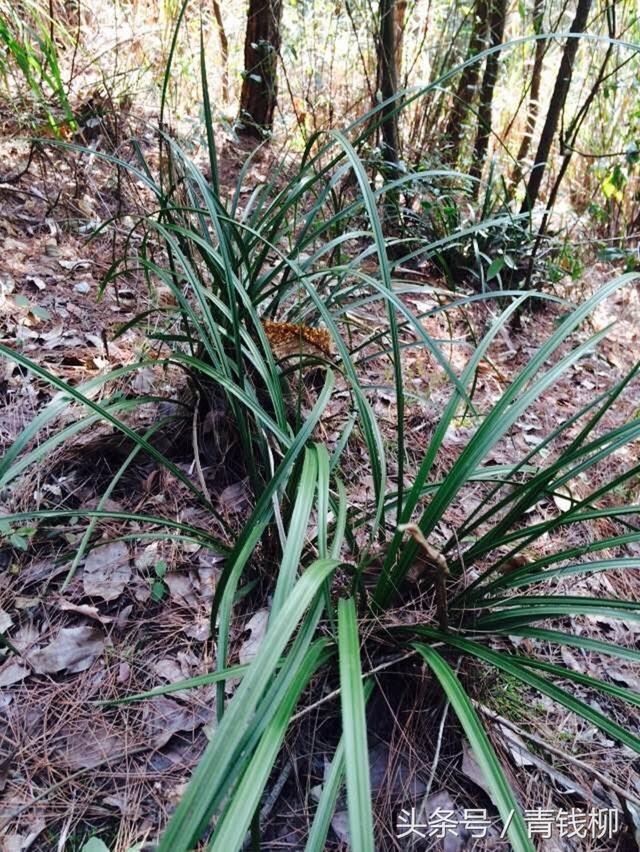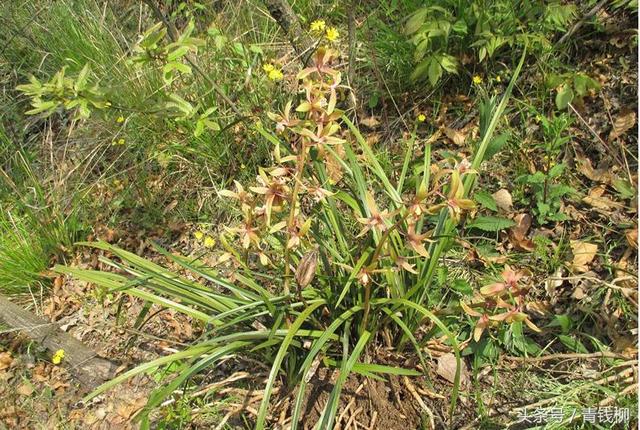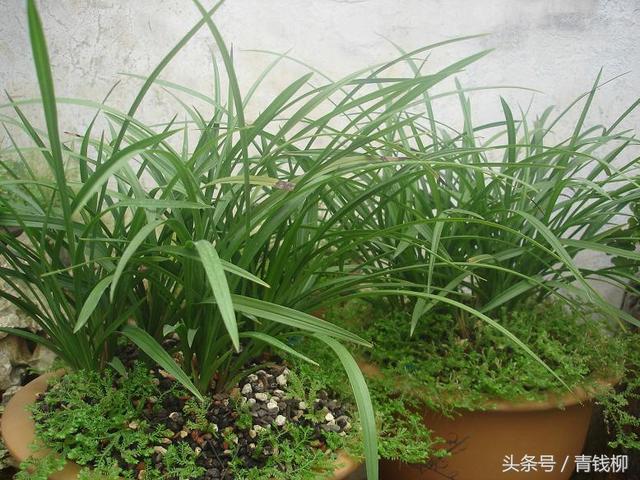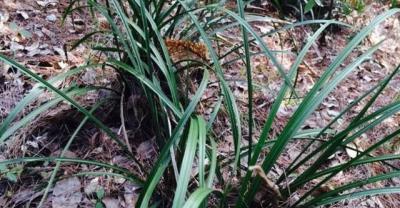Planting and maintenance skills of bonsai orchids
Planting and maintenance skills of bonsai orchids
1. Place
The place where orchids are placed is very important, which directly affects the growth and development of orchids. Orchids are generally placed in the open field in spring, summer and autumn (in summer in the shade of the field) and indoors in winter. It is best to be open and moist outside. There should be plenty of light in the room, preferably facing south. This is good for orchids to grow. The orchid basin had better be put on the wooden frame or table, not on the ground.

2. Shade
Orchids are mostly semi-negative plants, and most species are afraid of direct sunlight and need proper shade. Orchids can shine more sunshine to promote their growth in the first and middle of April. It should be properly shaded after late April. The varieties of erect leaves in Chardonnay and Artemisia had better be placed in the south of the shade, so that they are properly exposed to more sunlight: the vertical leaves of Cymbidium and Chunlan should be exposed to 2 hours of light every day. From June to September, every day to early shade, such as Reed curtain can be used with a dense curtain or 2 layers of thin curtain. After October, the weather turns cool and the sun is weak, which can postpone shading, but we still need to pay attention to shading around noon.
3. Rain protection
Orchids can be caught in light rain, but to avoid mildew, showers or continuous rain. In the mildew and rainy season, especially to do a good job of rain prevention. From the second sentence of June to the middle of September, there are often showers. If it rains for a short time and the rainfall is small, it should be watered more in the evening to discharge the hot air in the basin, otherwise the orchid will be damaged or even withered. If the sun comes out again after the shower, it should be shaded in time to avoid the rising heat on the ground affecting the growth of orchids.
Rain Water's season coincides with the stage when orchids sprout leaf buds. If the potted soil is too wet, it will cause poor leaf bud growth or lead to diseases. At this time, you can sprinkle a small amount of plant ash to adjust the humidity of the basin soil.
4 watering
The flower proverb says, "dry orchid and wet chrysanthemum", which has a certain degree of truth. Generally speaking, it is best for orchids to be eight percent dry and two parts wet. If it is too wet, it is easy to make the flowers rot and die. The principle of watering should be: dry, wet, stop, properly dry. When mastering concretely, it should be paid attention to: more watering should be given during the growing period (from May to the end of June), less watering should be given during the budding period (about 3-4 months) and flowering period (about 3-4 months), and less watering or no watering should be done during the dormant period (winter). Those with large flowerpots and small orchid plants should be watered less; those with small plants in pots should be watered more. Hot and dry climate should be properly watered, cool and humid (such as mildew and rainy season, etc.) should be less or no watering. For orchids newly dug from the mountains, if there are few or more broken roots, they should be watered less to dry the pot soil, so that the roots will not rot and it is conducive to the emergence of new leaves.
5 fertilization
Orchid fertilization depends on the growth of orchids. Those with luxuriant growth and no disease can be fertilized, while those with poor growth can not be fertilized or fertilized in a small amount. The new roots of orchids just dug up from the mountain must not be fertilized before they are sent out. They need to be cultivated for 1-2 years and fertilized only when the new roots are exuberant, otherwise they are easy to die. Generally speaking, when the leaf bud of orchid extends about 1.5cm in June and July, thin and rotten liquid fertilizer can be applied once or twice (chemical fertilizer is not suitable), but it is not suitable to apply fertilizer in high temperature season. In August and September, the liquid fertilizer was ripened twice again. The plant ash extract of vegetarian orchids can be applied for 1 or 2 times, and the effect is very good. The best fertilization time is in the evening, and fresh water is watered again in the early morning of the second day. An easier way to tell whether orchids need to be fertilized is to look at the color of the leaves. Leaf yellow and thin is lack of fertilizer, should be topdressing; leaf black and leaf tip scorched is too much fertilization, should stop fertilization.
6 pruning
Continuous pruning should be carried out in orchid culture. When the old leaves are withered and yellow, they should be cut off in time to facilitate ventilation, and the withered tips of some leaves should also be cut off. In particular, the leaves damaged by diseases and insect pests need to be removed in time to avoid infection. When cutting off leaves with virus disease, do not use scissors to cut disease-free leaves to prevent the virus from spreading. If the same pair of scissors is used, it needs to be disinfected. After the flower buds of precious orchids are unearthed, if there are too many flower buds, strong buds should be left, and the rest of the thin flower buds should be removed, leaving 1 or 2 flower buds in each pot. If there are too many flower buds, it will not only make the flowers bloom badly in the current year, but also consume too much nutrients of the maternal parent to affect the flowering next year. In general, orchids do not cut off flower buds. The flowers of Chunlan should be cut off after blooming for about half a month, and the inflorescences of Chardonnay should also be cut off one week after the last flower on the inflorescence. Valuable varieties should not be pollinated, otherwise they will blossom the following year. If it is used as a cross breeding, it is also necessary to pay attention to cultivation to make its fruit full and mature.

7 prevent cold
Qiulan should take precautions against the cold ahead of time, such as when the temperature is 2: 3 ℃, you can move indoors. Cold orchids need to be protected against the cold in advance when growing in the south. Spring, summer orchid cold resistance is strong, if there is a frozen appearance should also be moved into the room in time. It can survive the winter at room temperature for 1 ~ 2 ℃. In case of a serious cold snap, when the room temperature drops below 0 ℃, it is necessary to heat it up in time, as long as it can keep the room from freezing. Indoors, autumn orchids need to be placed on the south side, spring and summer orchid on the other side. Windows should be opened to the south and southeast around noon (Qiulan should not open windows on a cloudy day of 1: 2 ℃, in case cold wind blows frostbite leaves). Autumn orchid likes to dry in winter, and the soil of other orchid pots should be kept moist.
8 picking flowers
For orchids with poor growth, if there are not many leaves in each clump, or the roots are not good, flowers should be picked. For better varieties, Chunlan can properly pick 1 or 2 buds, Chardonnay leaves 1 or 2 buds when the bud is elongated, and the rest can be removed, so that the flowers can bloom longer and make the new leaves more, and the old leaves are not easy to die. The precious spring orchid should be removed for 3 to 5 days to make the leaf buds grow and thrive; when the flower of the summer orchid blossoms to the top, it can also be cut off from the basin 3cm.
9 flood control
Cultivation sites such as open around, the terrain is higher, in summer when there is a strong wind or typhoon transit, we need to do a good windbreak work, so as not to damage the leaves of Chardonnay or cold orchid.
10 spray
In the dry season, spray is carried out on the balcony where potted flowers are placed every evening, mainly making the ground moist and increasing air humidity. The pot noodles of orchids should also be sprayed. Spray upward to make the fog drop fine and evenly, and the leaves are moist, which can promote the orchid to grow well and the leaves are full of luster.
11 pest control
Sterilization treatment (exposure in the hot sun) should be carried out to prevent the occurrence of diseases. Orchids are most prone to white silk disease in rainy and high temperature seasons, which can be prevented by spraying 800 times of methyl topiramate or Bordeaux solution. If the disease is serious, 500,750 times of methyl topiramate can be sprayed every 7 to 10 days. Shell insects are the most common pests. If shell insects are found, they should be eliminated in time. If you want to avoid the invasion of shell insects, you can use "1059" 2000 times solution to prevent and cure it from April.
In order to restrain the occurrence of orchid diseases, we should not only properly control the drying and humidity of the potted soil, but also use more mud pots and less glazed pots in the selection of flowerpots. Especially for orchids newly dug from the mountains with poor growth, they must be planted in mud pots. This makes the basin soil easy to dry, which can promote the growth of orchids and reduce the incidence of disease.
The above is a brief introduction, orchids are relatively strict in terms of living environment and nutritional requirements, so we should maintain them in accordance with their living habits in order to grow beautiful orchids.

- Prev

Matters needing attention in planting and preservation of quinoa
Quinoa, native to the Andes of South America, is the main traditional food of the Inca indigenous people. It has been cultivated for more than 5000-7,000 years because of its unique characteristics.
- Next

Now the pesticide residues in grain and vegetables all exceed the standard, but you have nothing to be afraid of!
Now the pesticide residues in grain and vegetables all exceed the standard, but you have nothing to be afraid of! It's not easy for this fat man to make money, and fruit stalls have to keep pace with the times and pass by.
Related
- Fuxing push coffee new agricultural production and marketing class: lack of small-scale processing plants
- Jujube rice field leisure farm deep ploughing Yilan for five years to create a space for organic food and play
- Nongyu Farm-A trial of organic papaya for brave women with advanced technology
- Four points for attention in the prevention and control of diseases and insect pests of edible fungi
- How to add nutrient solution to Edible Fungi
- Is there any good way to control edible fungus mites?
- Open Inoculation Technology of Edible Fungi
- Is there any clever way to use fertilizer for edible fungus in winter?
- What agents are used to kill the pathogens of edible fungi in the mushroom shed?
- Rapid drying of Edible Fungi

